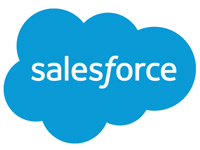
Salesforce finished up the second quarter with a strong showing at its developer conference in San Francisco, TrailheaDX, roughly quadrupling last year’s attendance and flooding its developers with new technology.
Over the last few years, the company has built out a multidimensional matrix of product offerings that include customer relationship management components like sales force automation and customer service, but it has been careful to introduce back-end technology products that support administrators and developers as well. It makes all the sense in the world.
Salesforce rapidly is transitioning past a point where it can grow only by selling more CRM seats. Market research shows that only a plurality of businesses use CRM today, implying that there’s room for further growth — and there is. However, many of the businesses that don’t have CRM either are too small or don’t fit the model. A tire dealer and a restaurant are both businesses, but not likely candidates for CRM.
That’s not to say that they can’t benefit from application support. They can, and the bottleneck always has been the limitations of a spreadsheet app on one side, and the effort needed to build something new to fit a business.
You could say the same about smaller businesses that already use CRM: They need ways to build and tailor apps, and that’s what made the TrailheaDX conference so interesting.
3 App Development Paths
TrailheaDX encompasses all of the knowledge that one needs to develop applications on the Salesforce1 platform, and there are a lot of moving parts.
“Trailhead” is the name of the self-teaching/learning system that people can use to learn everything about app development on Salesforce.
There are three modes of configuring/customizing/developing apps that Trailhead teaches about, corresponding to the three development modes Salesforce offers: completely codeless, some code, and traditional professional developer mode.
Corresponding with these modes are roughly 200 learning units, each with a badge for the resume of everyone who passes an exam.
At the TrailheaDX conference, Salesforce introduced some sweeteners that enable development of very robust apps that go way beyond traditional database applications.
Briefly, they include the following:
- Einstein Sentiment, which enables classification of the tone of text in a message. This rating capability will be useful for helping the Einstein AI tool to rank situations from negative to neutral to positive.
- Einstein Intent, which helps developers train models to understand the underlying intent of customer interactions, which further will help to determine next actions and offers.
- Einstein Object Detection, for training models to recognize different objects in an image.
At last year’s Dreamforce, CEO Marc Benioff said this would be the year of Einstein. The company has been executing on that strategy by embedding the artificial intelligence solution in all of its clouds, so it was time to make those tools available to developers too.
By the way, the developer tools are classified as “Salesforce DX,” which I find confusing — a naming convention that probably needs revisiting.
Two new partners — Atlassian, an agile development methods company, and GitHub, which provides source code management and collaboration capabilities — have joined the partner ecosystem to help ensure that developers leverage the new capabilities optimally.
The emphasis throughout Salesforce DX seems to be configure if you can — but if you’re going to code, leverage all of the modern capabilities, like agile methods, that you can. These partners appear to be testimony to that thinking.
CRM’s Future
What does all of this mean for CRM? Lots.
First, it further opens up the greatest opportunity for Salesforce to sell seats by enabling many more apps to be built and subscribed to through the AppExchange.
Second, it puts a friendly arm around developers at a time when all of the major software houses offer something to make developing code easier and faster. This might seem to defy a Salesforce precept that coding never would be needed with its products, unlike other CRMs, but the fact of the matter is that in a general-purpose development environment, coding isn’t going away. Instead, the little coding that will be done in the future will be really hard stuff that machines can’t do.
Third, this approach from no code to full code is expected to discover thousands of new people who can do the work — talent that might have been overlooked in another era. In a time of talent shortages, programs like Trailhead should help businesses find additional people to at least do some of the easier system maintenance, saving the developers for the hard stuff.
Salesforce DX is in an open beta and likely will show some results by Dreamforce. Einstein Sentiment and Einstein Intent also are in beta, while Einstein Object Detection is in pilot, and no pricing was available at the show for any products not fully GA.
It’s not too early to begin wondering what Salesforce will want to announce at Dreamforce. I suspect there will be more Einstein capabilities, especially in concert with other products like IBM Watson. Meanwhile, this company continues to impress. While other vendors are puffing up their reputations with cloud basics, Salesforce continues to imagine a bright future.























































Social CRM
See all Social CRM